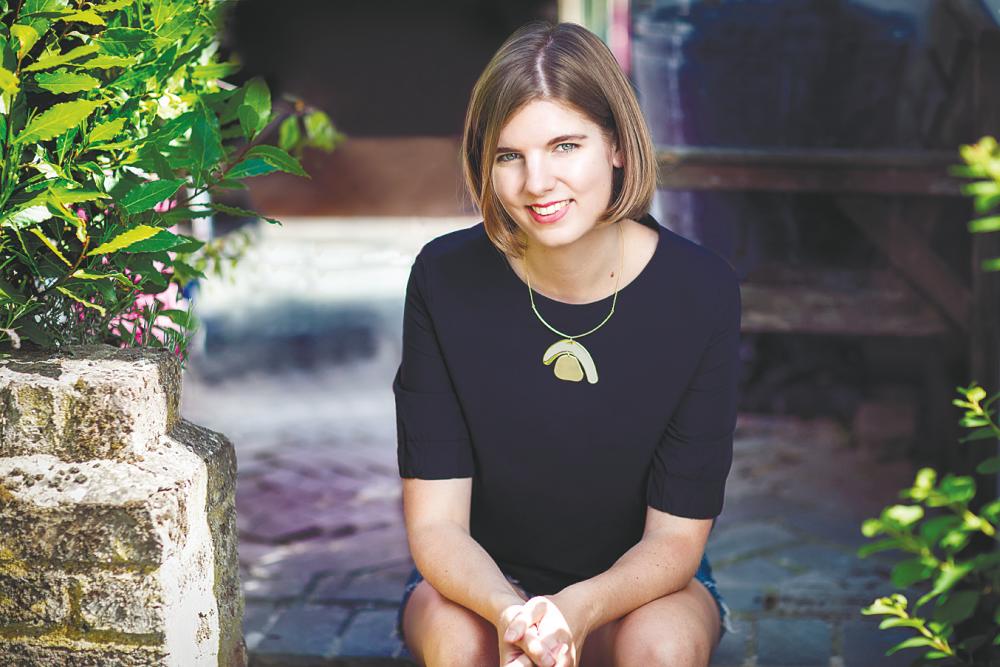IN HER own words, it has “been a completely mad year” for Elizabeth Macneal, the author of historic novel The Doll Factory.
Her first published novel has won the 2018 Caledonia Novel Award, been published in 26 languages by Picador, and its TV rights have been optioned by British production company Buccaneer Media.
During our recent tele-conference interview, Macneal confessed to still trying to process the publication of her first book.
“It still doesn’t feel that it has completely sunk in,” she said. “I have been writing for a long time, and I have written two novels that couldn’t find a home with publishers.
“So this is technically my third [book]. I almost don’t know how to process it.”
Set in 1850s London, The Doll Factory revolves around Iris, an aspiring artist who works as an apprentice at Mrs Slater’s Doll Emporium with her sister Rose. Iris also becomes the object of desire for Silas, a strange man who is a taxidermist and collects curiosities.
When Iris is asked to be a model for Pre-Raphaelite artist Louis Frost, she agrees in exchange for lessons. Despite being disowned by her parents and shunned by her sister, Iris follows her heart and eventually falls for Louis.
However, Silas’ dark obsession with Iris continues to build.
When asked how the idea for The Doll Factory came about, Macneal explained that she initially had planned to write two separate novels.
“One of them was a sort of a Pre-Raphaelite type novel, because I have been interested in Pre-Raphaelites for a long time. I saw my first Pre-Raphaelite painting when I was 10 or 11 when I visited Tate Britain, and I saw Ophelia (painted by John Everett Millais between 1850 and 1851) hanging from the ceiling.
“I was so interested in the woman in the painting who was the model, and what her life was like. I became interested in the women behind the Pre-Raphaelite movement, and how their influence has eroded over time.”
The model for Ophelia, Lizzie Siddall, had worked in a bonnet-making factory in London where she was spotted by the Pre-Raphaelite brotherhood, a group of painters.
Macneal was to write about her, but thought it would be strange to write a fictionalised biography of someone who was real.
So she decided to go full tilt and write about a character who was very similar to Siddall, and that was how Iris came about.
More ideas followed suit after Macneal visited a museum in London that featured a taxidermied lion, a human skeleton and hand-crafted fairies.
“I was thinking about what kind of person would have created a museum like [this].”
Initially, Macneal thought of writing about a modern-day collector of curiosities, and then decided to turn him into a person in the Victorian era who created these stuffed animals for artists to use in their paintings.
“[Both of these] came together, and then I wrote the story fairly quickly.”
The story grew into that of Iris and Rose, twin sisters who look different due to Rose’s disfigured face (caused by measles).
Once close, the sisters drifted apart mostly due to Rose’s resentment of her sister and rejection from the man she was supposed to marry.
“I became interested in the dynamics between two sisters who were living in such close quarters, a claustrophobic and stifling environment, and how jealousy, resentment and bitterness can breed.
“I was fascinated by the Victorian view of morality and ruin, and how marriage was the only means of escaping the situation they were in.”
As a potter herself, can Macneal relate to the way Iris, a budding artist, seeks approval for her work?
“Not so much as an artist but as a writer,” Macneal admitted.
“Before I became a potter and a writer, I used to work in the city of London, in finance. In fact, the last time I got a call from Malaysia, I was working in a bank.
“In the early mornings, during the quiet times I would be writing in this deserted coffee shop, but I wouldn’t tell anybody what I was doing. It was during that time I was doing what I wanted.”
This quiet time helped give her more confidence with her writing.
“I was surrounded by people who took me seriously, and who took my writing seriously ... I was writing a novel and hoping that the critics, the establishment, and the publishers would hear what I have to say.”
Macneal is currently writing her next novel, also set in the Victorian era and with the story revolving around a strong female character.










